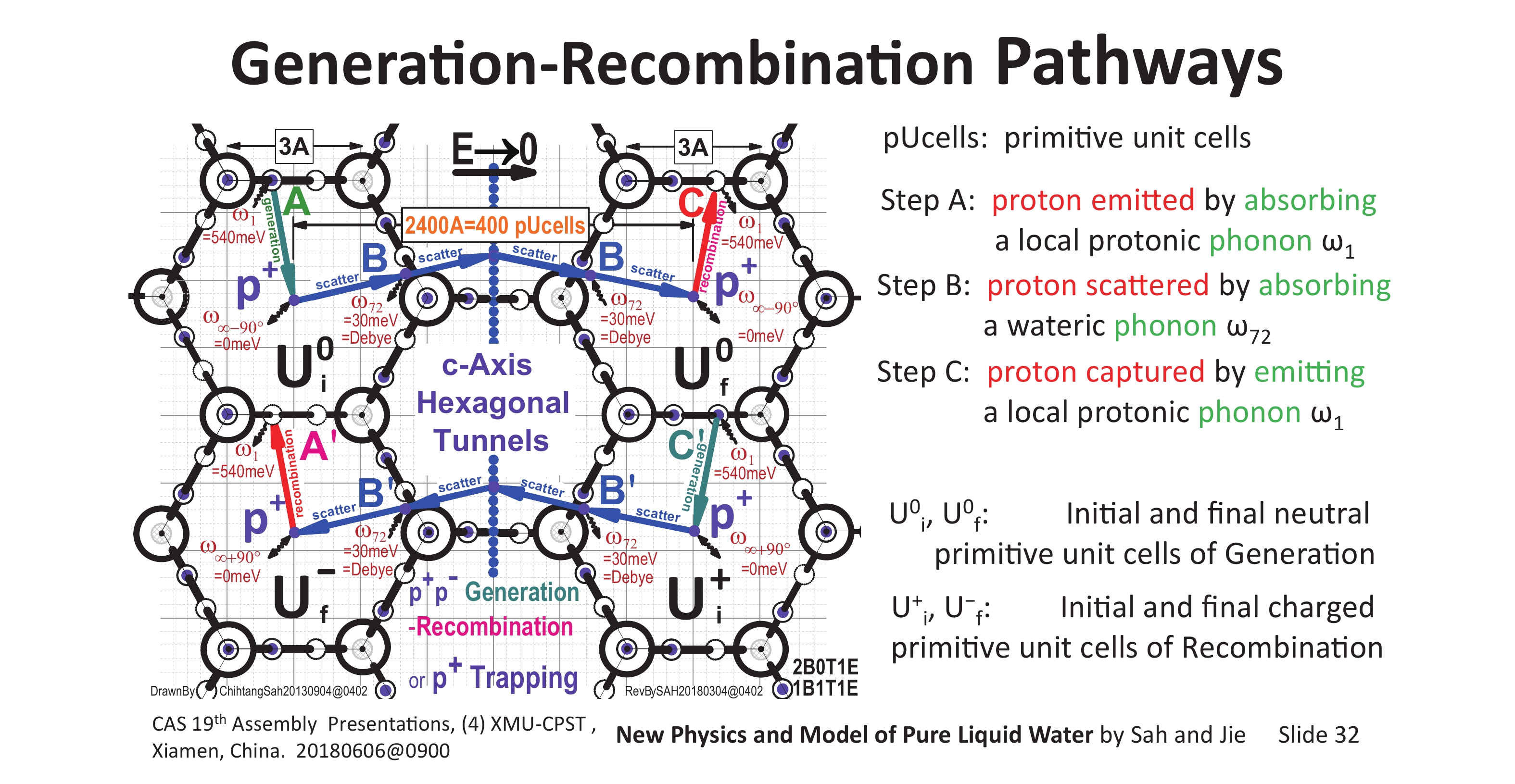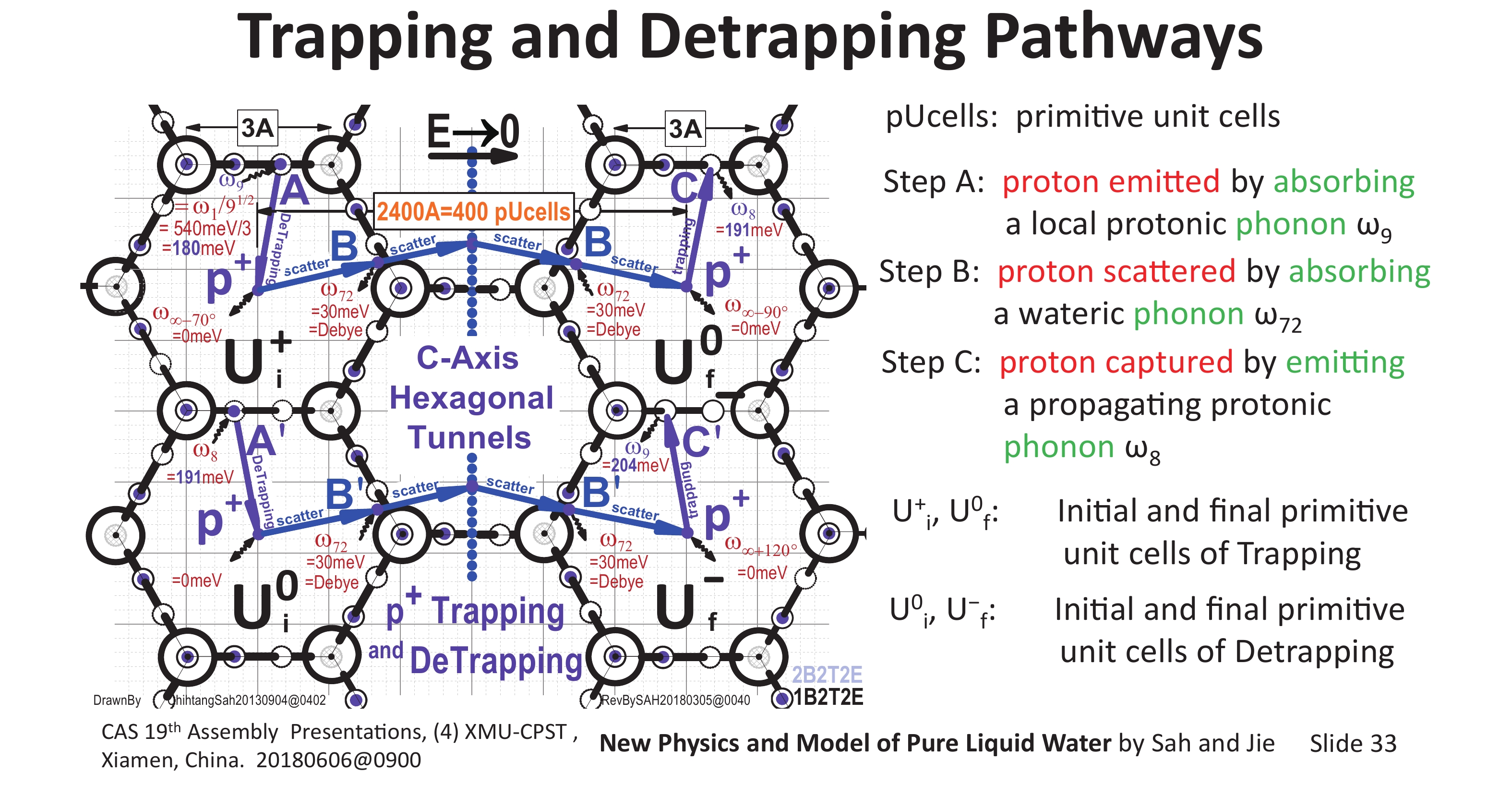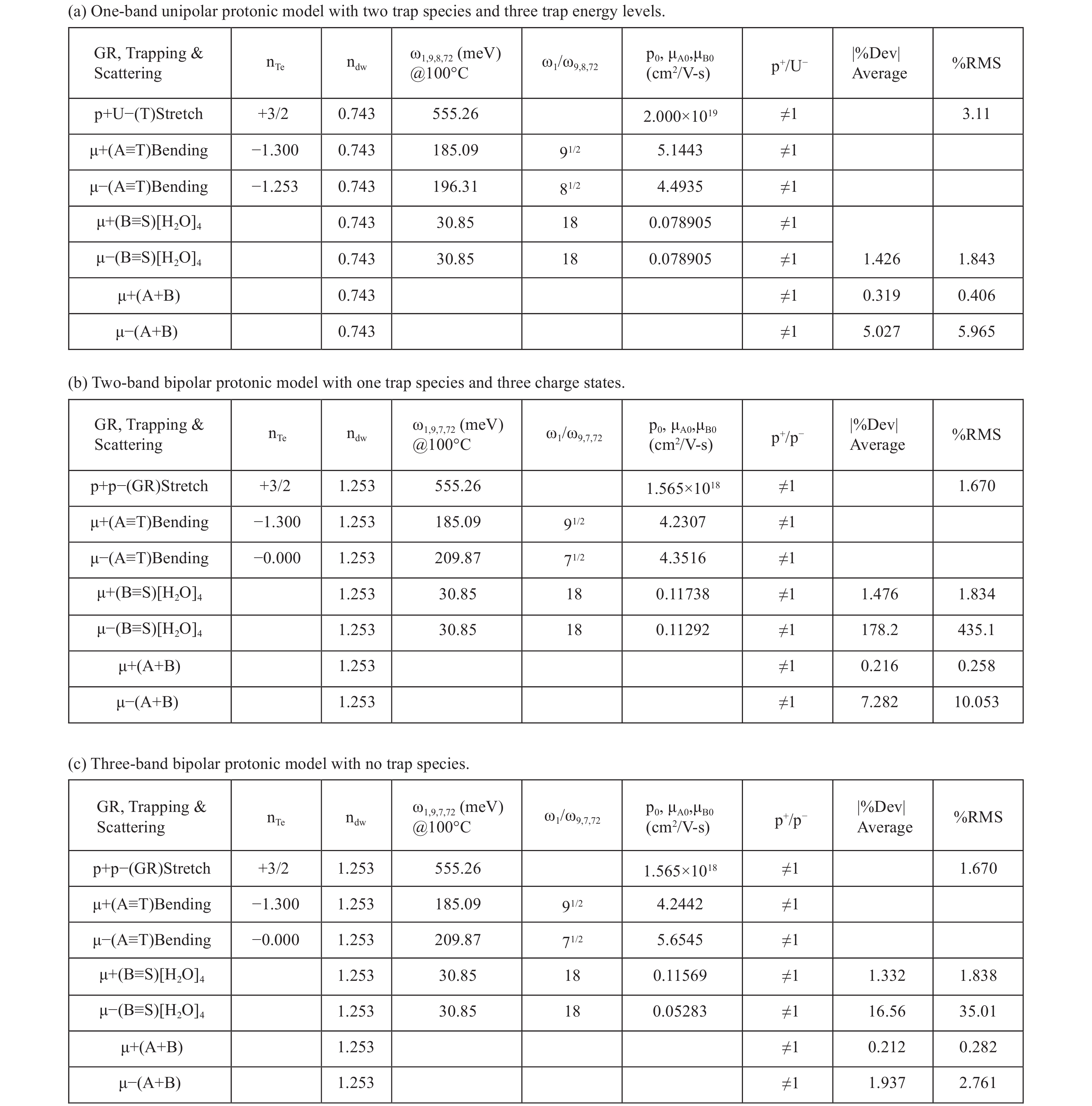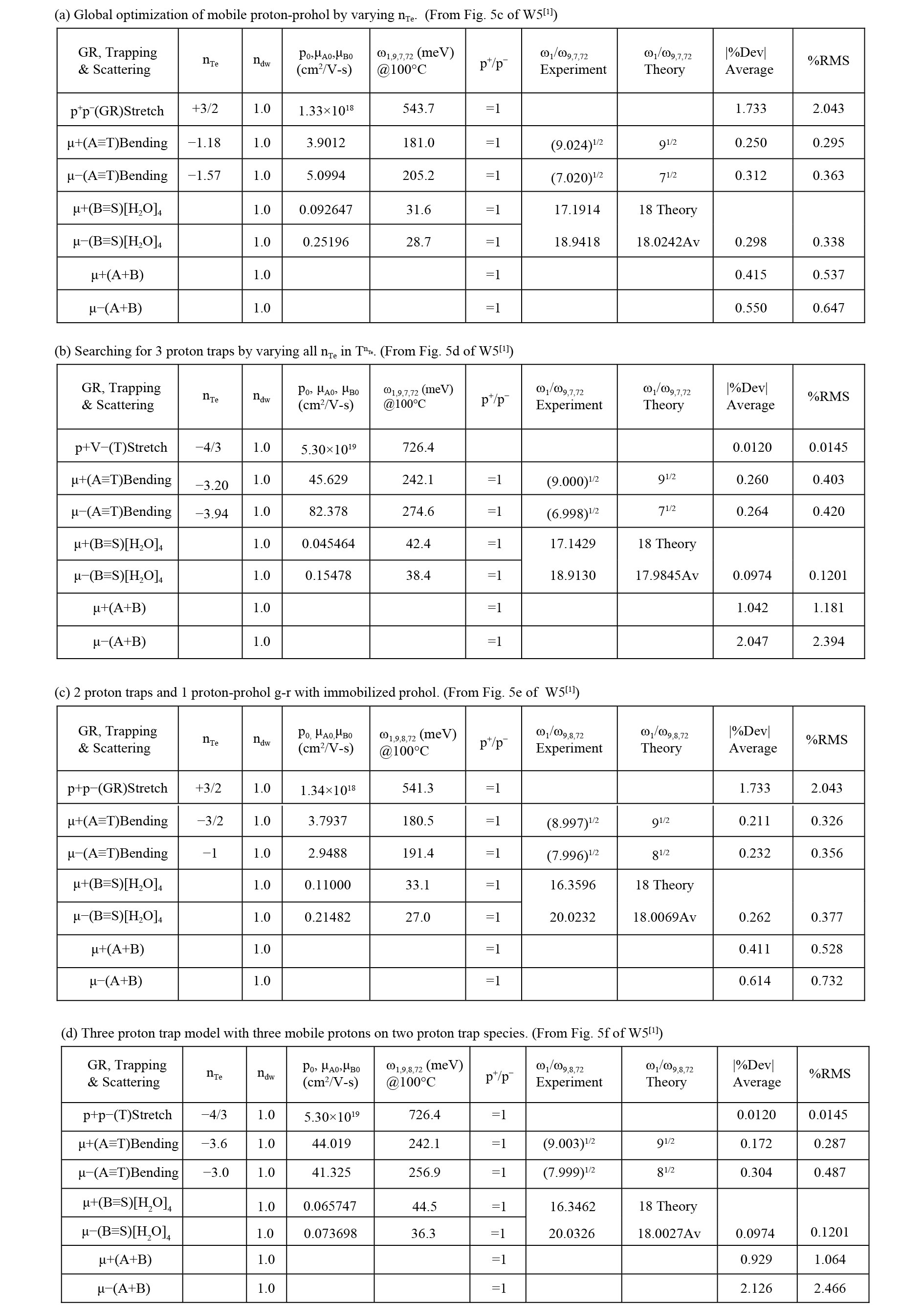| Citation: |
Binbin Jie, Tianhui Jie, Chihtang Sah. Studies of Water VI. One-Band, Two-Band and Three-Band, Trappy, Protonic, Semiconductor Lattice Models for Pure Liquid Water[J]. Journal of Semiconductors, 2018, 39(11): 111001. doi: 10.1088/1674-4926/39/11/111001
****
B B Jie, T H Jie, C T Sah, Studies of Water VI. One-Band, Two-Band and Three-Band, Trappy, Protonic, Semiconductor Lattice Models for Pure Liquid Water[J]. J. Semicond., 2018, 39(11): 111001. doi: 10.1088/1674-4926/39/11/111001.
|
Studies of Water VI. One-Band, Two-Band and Three-Band, Trappy, Protonic, Semiconductor Lattice Models for Pure Liquid Water
DOI: 10.1088/1674-4926/39/11/111001
More Information
-
Abstract
This report adds three protonic semiconductor models to explain the " abnormally” high electrical conductivity of pure liquid water characterized by the three industrial consensus parameters, the ion product (or pH) and the two ion mobilities. Existence of long-range order in fluid water under numerous daily conditions led us to extend the 1933 Bernal-Fowler hexagonally close packed crystalline Ice Lattice to model liquid water as Melted Ice. Protonic kinetic energy band and bound (trap) pictures provide semiconductor-physics based new models of these three parameters. They are extrapolatable engineered-models for developing novel biological, chemical, electrical, mechanical and medical applications of liquid water.-
Keywords:
- solid and soft-fluid-liquid materials physics,
- pure water,
- point-mass positive proton and negative prohol,
- proton-ion product (pH) and mobilities,
- propagating-and-localized phonon scattering and detrapping-trapping of propagating-and-localized protons and prohols,
- Protonic Fermionic Bosons and Bosonic Fermions
-
References
[1] Jie B B, Sah C T. Studies of Water V. Five Phonons in Protonic Semiconductor Lattice Model of Pure Liquid Water. J Semicond, 2017, 38(7): 071001 doi: 10.1088/1674-4926/38/7/071001[2] Sah C T. Fundamentals of Solid-State Electronics. 1010pp. 1991. World Scientific, Singapore. For A1G, see Preface. For electron-hole grtt models, see Section 360, Generation, Recombination, Trapping and Tunneling, and its subsection on p. 270−290 -
Proportional views






 DownLoad:
DownLoad:

















